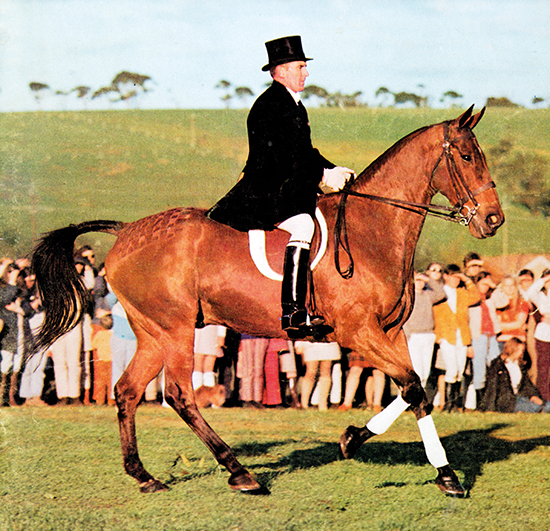 Mary Hanna writes about the moment when her life was turned around…
Mary Hanna writes about the moment when her life was turned around…
Every now and then we meet someone, or see something, that is truly inspirational. I would like to tell you about such a person, and an event that happened in my life that ignited a passion within me, that was later to become an obsession, beyond anything I could imagine at the time.
The person was Owen Matthews, affectionately known as ‘Doc’, due to his veterinary skills, and the event was a wonderful demonstration of Grand Prix Dressage to Music under spotlight at the Royal Melbourne Show.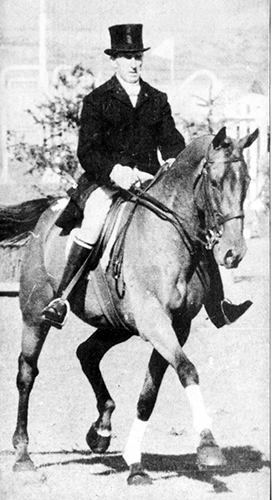
Doc and his beautiful Thoroughbred, Aintree Boy, performed a spectacular routine which included all the Grand Prix movements, accompanied by a wonderful and emotional mix of music – the performances were highlights of the Royal from 1965 to 1975.
To get this in perspective, let’s remember that up until that time, there had never been any other horse and rider able to perform these movements in Australia, let alone have the skill to put forward what was effectively a 20 minute routine of Grand Prix Freestyle to Music.
Even in Europe such an event must have been virtually unheard of, because the first World Cup involving a Grand Prix and a Kür did not happen until 1986. This was 21 years after Doc’s first performance at Melbourne Show!
Doc Matthew’s performance was so spectacular and beautifully choreographed that it became the number-one crowd pleaser at the show, and no matter what the weather was like, all the stands around and the main arena were totally packed with an enthusiastic crowd.
On the evening I remember most clearly, there was pouring rain, and a fierce thunder storm with great rumbles and flashing lightning. Aintree Boy, who had been trained as a police horse, never missed a beat. Although Doc was the Chief Instructor in the Mounted Police at the time, he wore traditional Top Hat and black frock coat, with his horse immaculately presented.
His performance was professionally put together, with music that really pulled at the heart strings. The commentary was informative and delivered via the well-modulated voice of Don Kinsey, without distracting from the flow of the performance.
Lights around the whole arena were dimmed, and the big bay would step out onto the arena under a single spotlight. As Doc warmed up to the strains of Love is Blue, the commentary would begin:
“There is an interesting story about what you are about to see…”
While Doc was warming up, Don Kinsey would continue to tell how Doc came to acquire Aintree Boy as a two year old from Sol Green, who gave him to Doc when he was deemed unmanageable as a racing prospect.
Once warmed up, Doc would move into collected canter and then halt, to the strains of La Mer. All the Grand Prix movements were then performed, beginning with half passes, big crowd pleasing extended trots, then moving onto canter half passes and pirouettes, all beautifully explained. Then Piaffe and Passage, which I remember as being really big and expressive, with a lovely active sitting Piaffe – performed to the song hit of the time, Tammi.
Then a halt, where the big Thoroughbred stood totally still under the spotlight, relaxed and waiting for his next instructions. On that rainy night, steam rose all about him like dragon’s breath as the rain pelted down and the lightning lit the sky… there was not a movement in halt from Aintree Boy. Finally he moved off for what Doc calls, ‘the big one’ – Tempi changes down to one tempis without any mistakes, his horse totally concentrated on the rider despite the mayhem of the storm all around them. Born Free, his signature song, floats through the air, and there is a tear in many an eye. His final salute and departing to Frank Sinatra’s My Way brings the house down. Doc has the crowd eating out of his hand by the time he leaves the arena, this time, adding a lighter musical note with the then popular Abba hit, Dancing Queen. Sweden’s Louise Natthorst needed to know she was 30 years late when she used Abba music at the World Cup final in 1998.
At the time, Doc’s performance was spectacular and drew big crowds wherever he performed. He did a circuit of country shows and rodeos, and introduced thousands of Australians to Grand Prix dressage. He was a great Ambassador for both the Police Force and the sport of Dressage.
The question for me was, How on earth does a man who has never been out of the country, never had a dressage lesson, and, in fact, had never ever seen a horse in real life perform a Grand Prix, get the idea to train his police horse to this level?
When I look back it was amazing that he had been able to do this, and I just had to find out, how? Doc’s performance so inspired me that I became really interested in dressage at a time in my life when I could only dream about Three Day Eventing.
Many years later I became good friends with Doc, and I was stunned when I found out the true story.
It started when Doc saw a movie of the Pan American Games, held in Sao Paulo, Brazil, 1963. The winner was Patricia Galvin on Rath Patrick from the USA. Doc played this movie over and over. He was totally captivated by the performance. He watched it so many times that in the end he could start to even see the faults and thought about the training of each movement. Being a natural horseman, he couldn’t help but start to experiment with his horse, Aintree Boy.
He was a very talented horse and he soon started to get the idea of the more basic dressage movements. Doc went on training him through the lateral work and extensions, for which the horse had a special talent. The flying changes became established and even the start of a few passage steps. However he then hit a bit of a wall, because he couldn’t figure out how to train the piaffe.
Doc had watched a movie of the Spanish Riding School’s escape, The White Horses of Vienna. Go to the expert he thought, so he wrote a letter to Colonel Podhajsky, the famous trainer of the School, seeking his help.
The Colonel promptly wrote back advising on the techniques of training piaffe / passage. In explaining the psychology of the horse, Podhajsky wrote: “If I yield to the whip, which I prefer to evade, I will get oats, and every horse loves oats. Good luck!”
Armed with this piece of information, Doc proceeded to teach Aintree Boy piaffe and passage in hand, then on long reins and finally on his back.
Apart from Aintree Boy’s wonderful ability to perform the Grand Prix movements, many modern day dressage horses would be daunted by performing under spotlight in such an atmosphere and difficult conditions. Clearly his four years as a police horse had quite some bearing on this. Aintree Boy, aside from being a talented jumper and successful three day eventer (he completed Gawler Three Day event) was also trained in crowd control.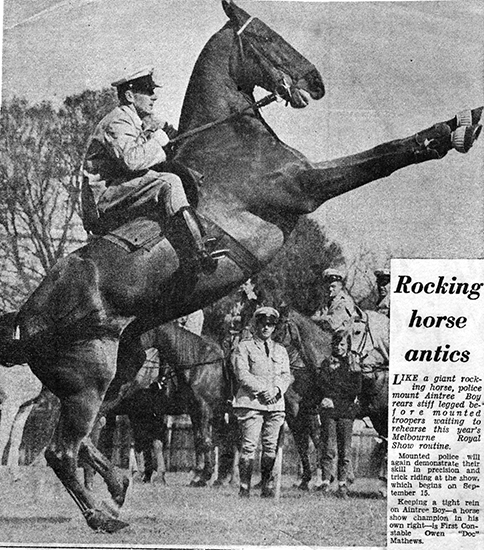
Police horses were used extensively in those days in the most explosive and difficult situations, often at risk to their lives. Doc had trained Aintree Boy to do a spectacular rear with straightened front legs, which would scare the hell out of any unruly citizen. He was also trained to stay calm and controlled in the mayhem of riots and demonstrations. Having survived such frightening situations, a performance at Melbourne Show would have been a walk-in-the-park for the experienced campaigner.
As Doc actually owned Aintree Boy, he sensibly took him out of the police force after his fourth year as he was concerned that he was being ruined by too many inexperienced and varied riders. It’s hard enough to train a horse to Grand Prix, let alone with him working with a different rider every day.
The next mystery to me was how did Doc get the idea of riding the dressage movements to music, and such a brilliant choreography? Here his police training must have come in handy. There was already a strong tradition of musical rides in the police force, at the time Doc joined and Doc was one of the few riders that actually enjoyed riding to music. Later when Doc became ‘Riding Instructor’, he greatly improved the rides, including canter, which was difficult for young in-experienced Mounties with double reins and lances to be held, while keeping formation. Doc produced a spectacular musical ride which eventually toured New Zealand in 1975. In the beginning the riders were accompanied by the Police Band, but later on, the music was recorded.
Once Doc started training Aintree Boy, he would put on records and play them while training. This would be done in the indoor at the police barracks, but completely in private because he didn’t want the others to criticize him. Gradually he found that if he played certain music, such as La Mer the horse would relax and work much better, and so would he. He found music that matched his horse’s rhythm, and it made them both feel good. From this point, he started to develop the idea of a performance to music, but he kept it very private until he felt it was good enough to present in public. The first Grand Prix Freestyle was about to be born and still no-one in Europe had given such a concept any thought. Let’s remember the first World Cup wasn’t ’til 1986 – that’s 21 years later!
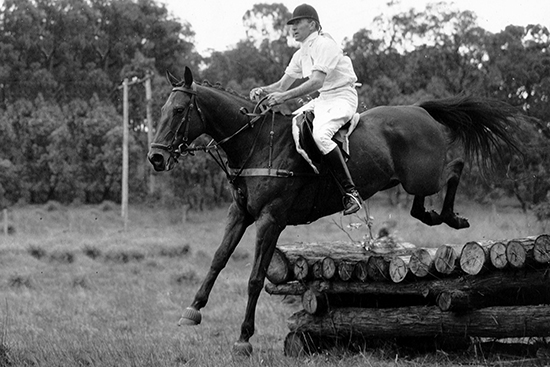 While this story is remarkable in itself, there is an even more amazing part to Doc’s story.
While this story is remarkable in itself, there is an even more amazing part to Doc’s story.
Doc didn’t come from the sort of background that would suggest that one day he would become a Grand Prix dressage rider. The fact that he ended up in the Police Force, considering his upbringing, is remarkable. He could have easily ended up on the other side of the law.
Owen Matthews was born in Fitzroy in 1923, at the time of the Great Depression. His father promptly departed from home soon after he was born, so his mother, unable to support a family of three kept her daughter and put the two boys, Owen and Paddy, into the care of Welfare. To start with, the boys were put into a foster home with Jack and Sarah Kelly (reputedly related to Ned Kelly) at their home in Cecil Street, South Melbourne.
During the first 15 years of his life, Doc was to suffer a great many hardships. Life with Mrs Kelly was the closest thing he ever had to a home for himself and his brother, but as she was too infirm to look after the two boys they ended up in the St Augustine Orphanage in Geelong. Life as an orphan in those days was extremely tough, and he suffered beatings and abuse from some of the Brothers and from his employers. At one point, he even ended up in gaol with adult prisoners, having never committed a crime. One of the Brothers at St Augustines had refused to have him back in the orphanage, saying he was a wild boy and they couldn’t hold him. Being stumped as to what to do with him, he was placed in a cell for three months, in an adult gaol at Royal Park.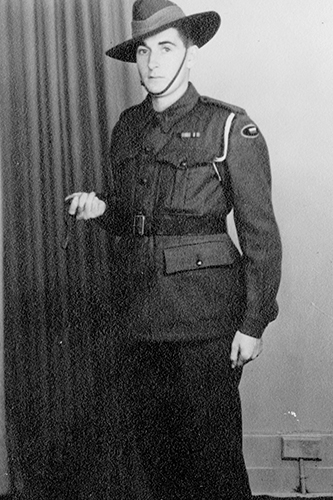
However one good thing that the orphanage did organize for him was a job on a farm near Colac with the Darcy family. Here he lived in the shearers’ quarters, and as part of his job, he was given an old piebald horse, Tilby, to ride. She was 30 years old, and at first he wasn’t even given a bridle! But Doc was free at last and his wild streak came to the fore, he galloped that pony all over the farm and jumped every stone wall he came across.
To be out in the country and on a horse’s back was a great freedom for him, and ignited his passion for horses that was to last a life time. However his exhuberance was to be his downfall and after a number of disastrous accidents with horses, that Doc admits were his fault, his employer had had enough, and he was sent back to the orphanage.
By the time he was 16, the Second World War had broken out, and Doc was keen to join up for the action. It was a requirement for joining the army to have a parent or guardian’s signature. No problem – by now he was back at Mrs Kellys – and he simply walked out of one recruiting booth carrying the enlistment form, and signed his guardian’s signature with his left hand. He then walked into another booth, handed in the paperwork, and he was in the Army.
Doc was well under-age, but to him, the army was a far better option than being in an orphanage or being exploited as slave labor on a dairy farm, as had recently happened to him.
After completing some training at Pukapunyal and then near Albury, Doc was shipped out on the Zealandia from Port Melbourne. Once outside the heads, their ship was escorted by the HMAS Sydney to Freemantle and then on to Indonesia. Finally they berthed in Singapore, and Doc’s war began.
His tough upbringing in the orphanage was probably what got him through the war years. After being captured by the Japanese, Doc and his brother Paddy, were both put to work on the notorious Burma Railway. For eighteen months, he had to survive the most grueling conditions on the point of starvation. He was beaten and tortured, being once hung by his wrists for two days from a bamboo pole for wielding an axe at a Japanese soldier who was baiting him. He was a hard man to break and his sheer will to survive pulled him through where many others perished.
According to Doc the following years in Changi prison were a picnic compared to the brutality he had to survive on the Burma Railway.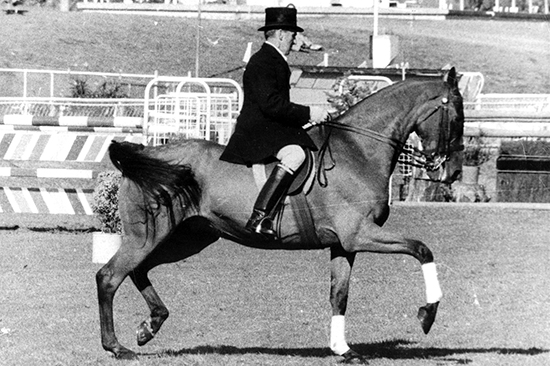
When he returned to Australia after the War, Owen Matthews arrived by tram in Melbourne. Two people were waiting for him. One was his mother, who he hadn’t seen since being abandoned at 18 months. She announced herself as such and then enquired as to how much money he might have in the bank, suggesting he might buy a house for them all to live in. An astounded Doc, sent her packing. The other was dear old Mrs Kelly, who was by now very frail, but the closest thing to any kind of real mother he had had.
Doc’s life went on for many years after the war without any real direction. He attempted to join the Police Force, hoping to join the Mounties, but was rejected as being too thin and too short! It was a bit of a hard call for someone who had just come out of a POW camp.
He tried his hand at many jobs, but people were often reluctant to employ returned soldiers. Eventually he opened a small riding school at Warburton called ‘Stagecoach Riding School’ with the motto: If you can’t ride, you can learn. It was named after his first horse called, Stage.
In 1952, he tried again to join the Police Force, and this time he was finally accepted. Ten years later he achieved his goal and became ‘Horse Master and Riding Instructor’. It was a long hard road, but he was finally doing what he loved the most.
Doc was very proud of his achievements in the Mounted Police. He drilled his riders and produced spectacular Musical Rides. Horses and riders were immaculately presented, and the riding skills must have improved dramatically during this time, thanks to Doc’s enthusiasm and passion for Dressage.
The Mounted Police were seen as essential for crowd control at demonstrations, and the ninety horses stabled at the St Kilda Road Barracks were frequently seen on patrol throughout the city, on beaches and at any major sporting or racing event. The Royal Tour of 1953 was escorted by the Mounties, as were Archbishop Mannix and President Johnson. The Mounted Police and Doc Matthews were also wonderful ambassadors for the police force. Doc always had a kind word and some advice for any young, aspiring rider, and frequently did demonstrations for Pony Clubs, as well as lessons.
However for me, the single most glorious and inspirational moment was that amazing night in 1972, that spine tingling performance in the storm on the arena of the Melbourne Royal Show.
At the time, I don’t think I really understood what Doc was doing and how difficult it was. Having talked to others who witnessed Doc’s performances, I think they had much the same feeling. It was emotional and spell binding to watch. In fact, watching our modern freestyles, I don’t think I have ever had quite that spine tingling feeling. To me, looking back, the amazing thing is that he found the inspiration and technique to train a Thoroughbred horse to perform all the Grand Prix movements, without any of the luxuries available to the modern Dressage rider, or the riders in Europe who were his contemporaries. He literally invented the Kür before European riders had even thought about it!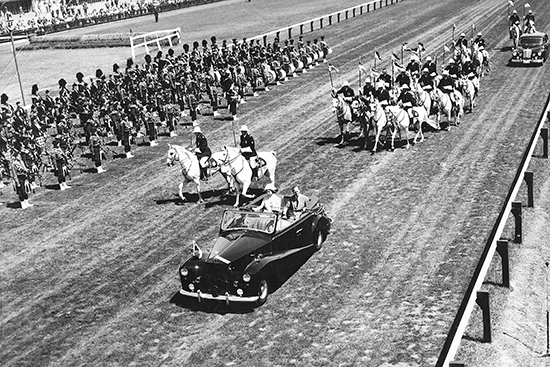
While we have trainers, videos, mirrors, competitions, purpose bred horses and some of us actually the money to buy these things, Doc had none of this. He had no money, a reject racehorse that tried to dump everyone that rode him into the nearest barbed wire fence, and absolutely no instruction. He figured it out for himself with the help of a couple of books, a letter from Podhajsky (a rather cryptic one at that) plus a single film of one dressage competition. He had an upbringing that would have ended most of us up in the nearest prison and yet somewhere he found the direction, inspiration and skill to put forward a performance so far ahead of its time… it’s mind-boggling.
So next time we are having a bit of a moment about training our changes, or not getting a decent piaffe, or just how difficult life is in general, let’s spare a thought for Doc. A man who against all odds, made something out of his life, that was an inspiration and an example to all. To Doc Matthews, I take my hat off!
He was truly a man ahead of his time…
Doc takes a look at the modern Kür
Doc Matthews’ music was quite emotional but it wasn’t music that heavily emphasized the rhythm of the horse, it was more about creating an atmosphere and really drawing on the emotions of the audience. I got him to use the internet to look at dressage for the first time, and he looked at Anky van Grunsven and Salinero, Edward Gal and Totilas and Imke Schellekens-Bartels and Sunrise. His comments were interesting.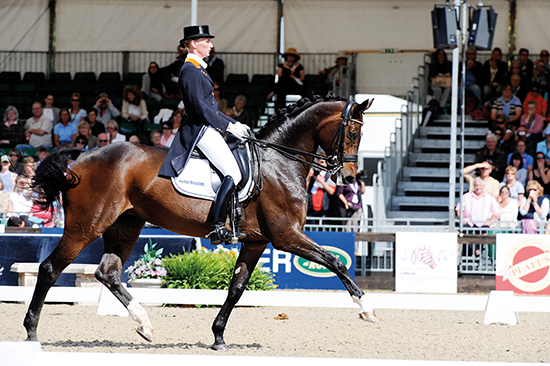
Sunrise
Now Doc doesn’t read any of today’s equestrian magazines, so he knows nothing about the politics… Of Totilas, he said, that is an incredibly strong, powerful horse, it’s amazing. He really admired the strength of the horse and his ability to continue doing the difficult movements. He said when he was training, he’d do a short period of something difficult then a longer period of something easier, he couldn’t believe how the horses could continue to do piaffe and passage, but he said he felt Totilas’ collected trot was incorrect, that it wasn’t collected trot because there was too much passage in the trot. He feels that collected trot is just that, collected trot, and passage is passage. I thought that was a very interesting comment.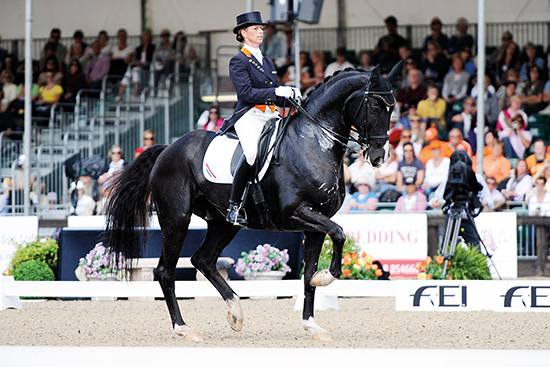
Salinero
Doc liked Imke Schellekens-Bartels and Sunrise, he thought it was more classically correct than Totilas, not as exaggerated, and he also like her music better for drawing on emotion.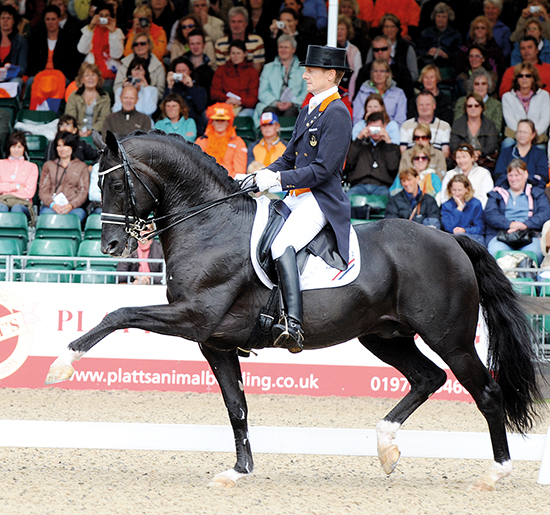
Totilas
He admired Anky and Salinero and he thought that was a bit more classically correct than Totilas. He thought it was clever the way the music was on the beat, but he didn’t like that modern day emphasis that we have on every step being on the beat, he thought music should create an atmosphere.
This article first appeared in the August 2010 issue of THM.

Owen Mathews was my first instructor when I was 14. He was inspirational and a brilliant instructor.
He had my ordinary 14.3 ugly horse doing extraordinary things including piaffe, passage, and canter pirhouette. I am amazed and saddened that his contribution to dressage in Australia is not more widely recognised. Thank you for your your article.
Vale “Mr Mathews”.
Doc Mathews was my instructor at Caulfield Pony Club. Those years I was so lucky to have him as he taught me so much. They were such wonderful years.
I didn’t know what a tough like he had endured until reading this article. Thanks for publishing it.
Owen was also my instructor at Caulfield Pony Club and took me under his wing, teaching me to jump. I had an anglo-arab Vermont, Doc got us jumping and eventing and jumping big show jumps I wouldn’t have dreamed of jumping. We also did quadrille at pony club, I was just 15, he made a huge impact on me, Miriam and Doc gave me hospitality at Cranbourne where we jumped the X country course. An unforgettable, generous and inspirational man. Vale ‘Doc’.
Wow, what an incredible, inspirational story this is, at 80 years old I have taken up riding again and I am loving every minute of it. I guess its never too late and you’re never too old to give up on your dreams.
I have only just caught up with this article whilst searching for information about Doc.
I too had that experience when I was only about 12 or 13 of seeing Doc and Aintree Boy do their performance, this time at Adelaide Royal, again under lights and again in a storm and it was absolutely everything you described! Totally spine tingling and awe inspiring that could teach a horse to do such things.
That was the moment I became interested in this thing called dressage. I wanted to know so much more and I’m still learning nearly 50 years later as a judge, coach and rider.
He was my inspiration to do dressage and it has never stopped.
Thank you so much for this article.
I was there that thundery night at Melbourne Royal ,and yes I had tears in my eyes too .
Such a spectacular horse and rider and the rain the music the single spotlight made it so memorable